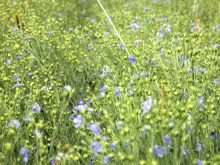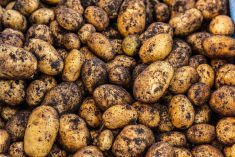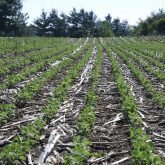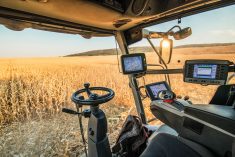For decades, U.S. farmers have helped feed the world by sowing some of the most versatile cropland, adjusting each year to grow a bit more of this and less of that, to replenish those crops in greatest shortage.
This year, however, even with farmers planting nearly every acre of arable land, it will not be enough to tame prices and replenish stocks.
The price of almost every major crop is at or near record highs; competition – between farmers and between crops – has never been more intense; and Midwestern property values have surged.
Read Also

Mazergroup’s Bob Mazer dies
Mazergroup’s Bob Mazer, who helped grow his family’s company into a string of farm equipment dealerships and the main dealer for New Holland machinery in Saskatchewan and Manitoba, died July 6 from cancer.
With arable land near its max for the world’s top exporter, productivity becomes paramount.
On the front lines of the effort is corn. The United States grows about 40 per cent of the world’s supply, and is using a growing share to make ethanol.
Thanks to biotechnology, better use of fertilizer, water and technology, corn has already seen sizable improvements in yields – the number of bushels from every acre sown.
A record-high yield of 164.7 bushels per acre was set in 2009. Last year’s average yield of 153 bushels per acre is up from about 137 in 2000, 119 in 1990 and 91 in 1980.
“We have some pretty significant increases going on,” said University of Wisconsin corn agronomist Joseph Lauer. “There is no indication that it is slowing down or even plateauing. It is a unique story. No other crops have seen the yield increases corn has.”
But even though the gains have been impressive, the rate of yield growth has slowed, and some agronomists are worried about the outlook.
Seed company Monsanto helped push yields sharply higher over the past decade by introducing novel combinations of germplasm groups from independent seed companies it consolidated and integrated, said University of Illinois corn genomics expert Stephen Moose.
That led to a “quantum leap” in hybrid vigour, he said, one that won’t be easily repeated.
“Most of the benefit from these new combinations has been realized, so I am not sure we will see a similar jump in the next decade,” he said.
Additionally, Moose said corn already is typically grown on the best acreage available. Shifting new, less productive, land to corn will limit yield increases.
KEEPING PACE
Food demand will grow with the world population, forecast to rise to nine billion in 2050 from almost seven billion now.
Every bushel helps.
Against this year’s projected acreage of 92 million acres planted to corn, each additional bushel per acre of corn would increase the crop by 2.3 million tonnes.
The U.S. Department of Agriculture this month issued long-term projections for a yield gain of 9.3 per cent for corn over the next decade, with farmers expected to see an average of 180 bushels per acre by 2020-21.
Some companies see even bigger gains ahead.
Three years ago Monsanto publicly pledged to double yields in corn, soybeans and cotton against a year 2000 base by 2030. For U.S. corn, that means over 273 bushels per acre.
More precise plant-breeding techniques are contributing an average of more than two bushels per acre year over year in Monsanto seed varieties, said Monsanto’s David Fischhoff, who oversees technology strategy and development.
Competitor DuPont says some customers routinely report 200 bushels per acre, and a few can harvest 300 bushels, nearly double the national average.
“I’m very optimistic of the growth of yield potential,” said Roy Luedtke, a corn research
director for DuPont’s Pioneer Hi-Bred.
Both companies have new types of corn headed to the market aimed at minimizing yield loss in drought, as well as other corn seeds to minimize losses from pests and disease.
Dow AgroSciences, a unit of Dow Chemical and the Swiss company Syngenta, last month received regulatory approval for corn genetically modified to boost ethanol productivity.
BULL’S EYE ON BUSHELS
Myriad factors play into how much corn will be harvested from U.S. farmland. Weather patterns, improvements in corn seed, breeding practices that speed identification of superior germplasm, and improvements in farmland management practices, fertilizer, fungicides and other inputs all play a role.
University of Wisconsin’s Lauer noted the rate of improvement since the advent of biotech seed development in the mid-1990s has improved to about two bushels per acre, a far cry from the six bushels needed to reach the 300-bushel target in the next two decades.
To get there, farmers may have to use more fertilizer and water, which have their own supply and demand concerns.
———
“Mostofthebenefitfromthesenew combinationshasbeenrealized,soIamnotsure wewillseeasimilarjumpinthenextdecade.”
– STEPHEN MOOSE


















